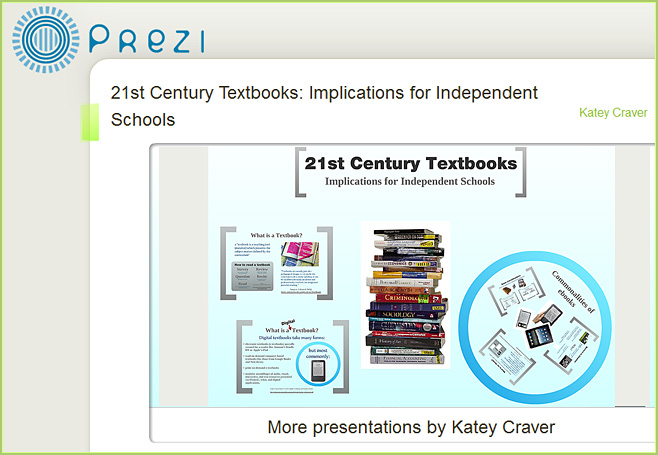6 companies aiming to digitize the textbook industry — from Mashable.com by Sarah Kessler
6 companies aiming to digitize the textbook industry — from Mashable.com by Sarah Kessler
Pearson & McGraw-Hill make multi-million dollar investment in Inkling — from Kirsten Winkler
It seems as if the latest study from Xplana in which they predict that the tipping point for digital textbooks is as near as 2015 has opened up the wallets of two major publishers for an undisclosed “multi million Dollar” investment.
Inkling, the maker of the iPad application and platform which delivers enhanced and engaging textbooks, leaving the “flat, PDF-based digital textbooks” behind is the beneficiary and it could give the startup a competitive edge over the well funded competitor the Kno.
But as money is not everything Inkling, Pearson and McGraw-Hill also made some significant content commitments, boosting the number of titles available on the Inkling platform…
Also see:
Bootstrapped Publishing – DIY FTW — from thinktiv.com
Digital textbooks reaching the tipping point in the U.S. higher education — A revised five-year projection — from xplana.com by Rob Reynolds
7 things you should know about open textbook publishing — from Educause, March 2011, by Judy Baker (Foothill College) and Jacky Hood (Foothill College)

.
Originally saw this at xplana.com.
Who needs textbooks? — from Newsweek.com
How Washington State is redesigning textbooks for the digital age.

Jessie Sellers, a student at Tacoma Community College in Washington state, was puzzled when he logged onto his school’s website last December to figure out which book he needed for his upcoming English class. Whereas for all his previous courses, the 24-year-old education major could simply click on a link to view the name of the required textbook, this time there were no books listed at all. It was no mistake: thanks to an ambitious pilot program aimed at reducing the cost of textbooks at public colleges, Sellers and hundreds of other students across the state won’t have to buy textbooks for more than three dozen courses offered this winter.
Washington’s Open Course Library is the largest state-funded effort in the nation to make core college course materials available on the Web for $30 or less per class. Financed with $750,000 from the state of Washington and a matching grant from the Bill & Melinda Gates Foundation, the goal isn’t just to reduce student costs, says program architect Cable Green. It’s also to create engaging, interactive learning materials that will help improve course completion rates. By the time the project is completed in 2012, digitized textbook equivalents for some 81 high-enrollment classes will be available online for the more than 400,000 students enrolled in Washington’s network of community and technical colleges. Even better, the materials can be shared across the globe, largely for free, because they will be published in an open format that avoids the most onerous licensing restrictions. To keep costs at a minimum, the teachers developing the materials are relying primarily on either existing material in the public domain or embarking on the painstaking task of developing materials from scratch.
— from Touch User Interface